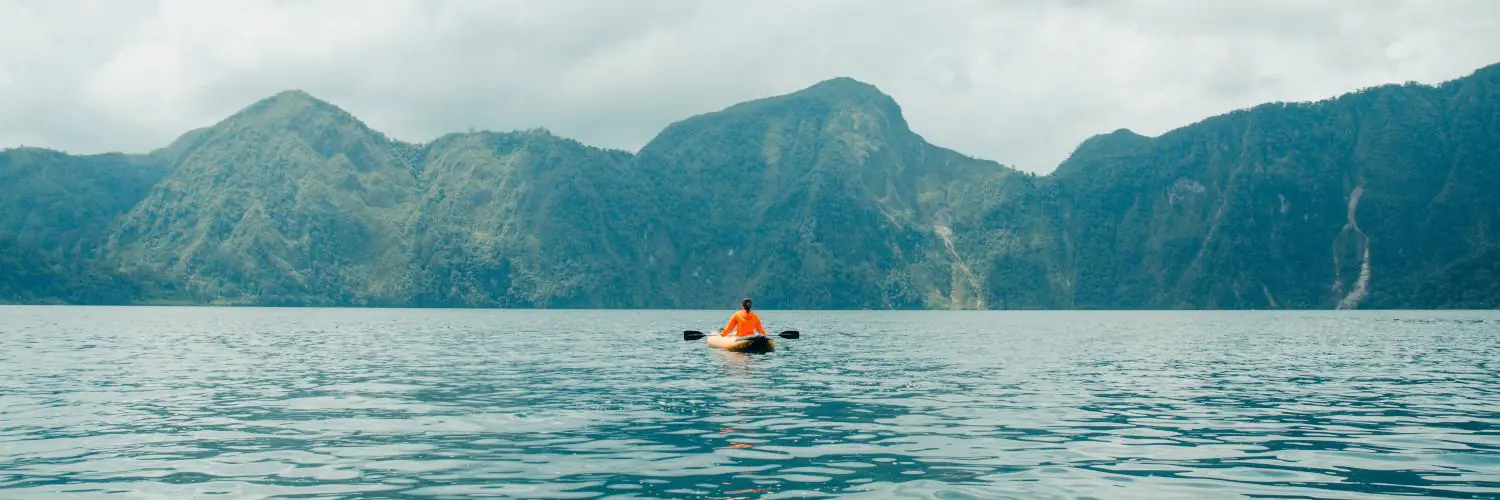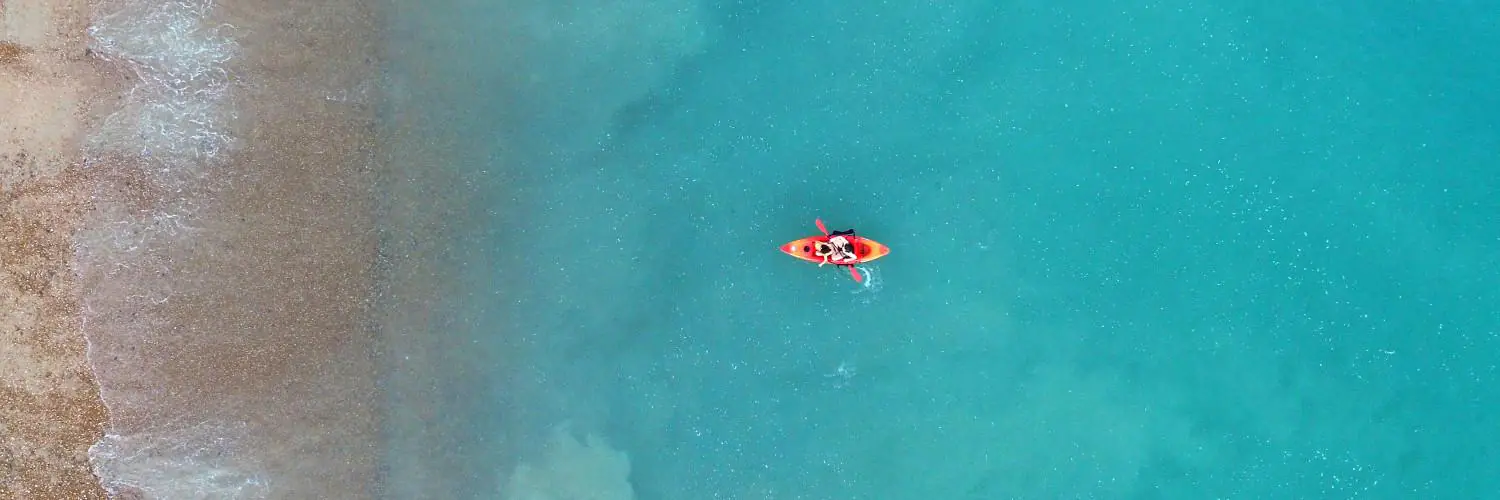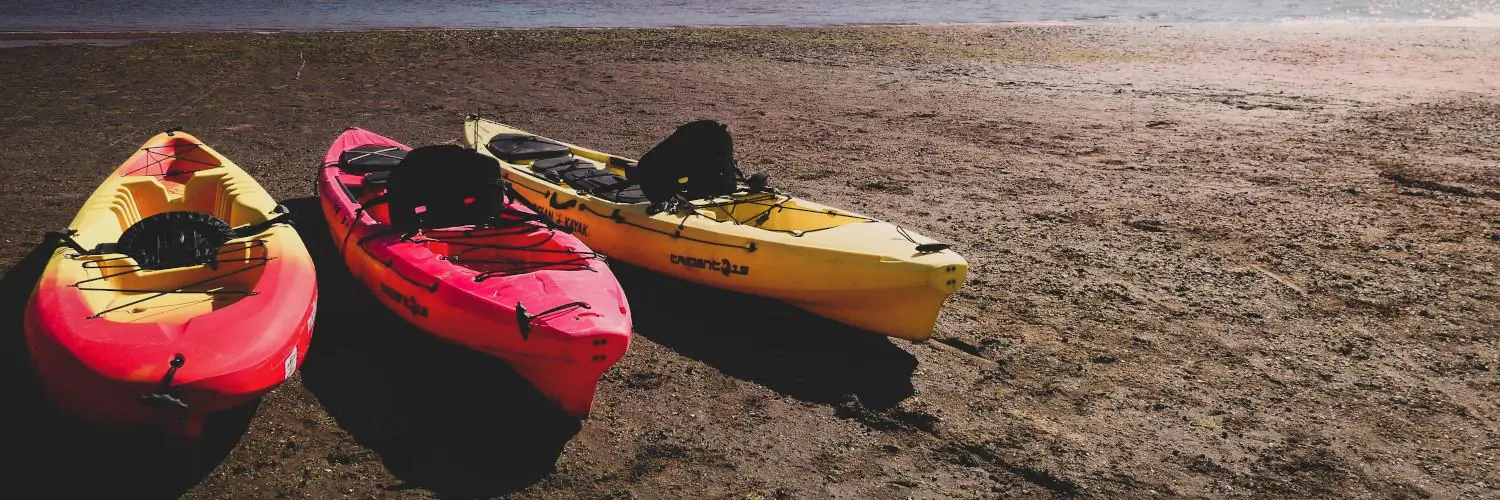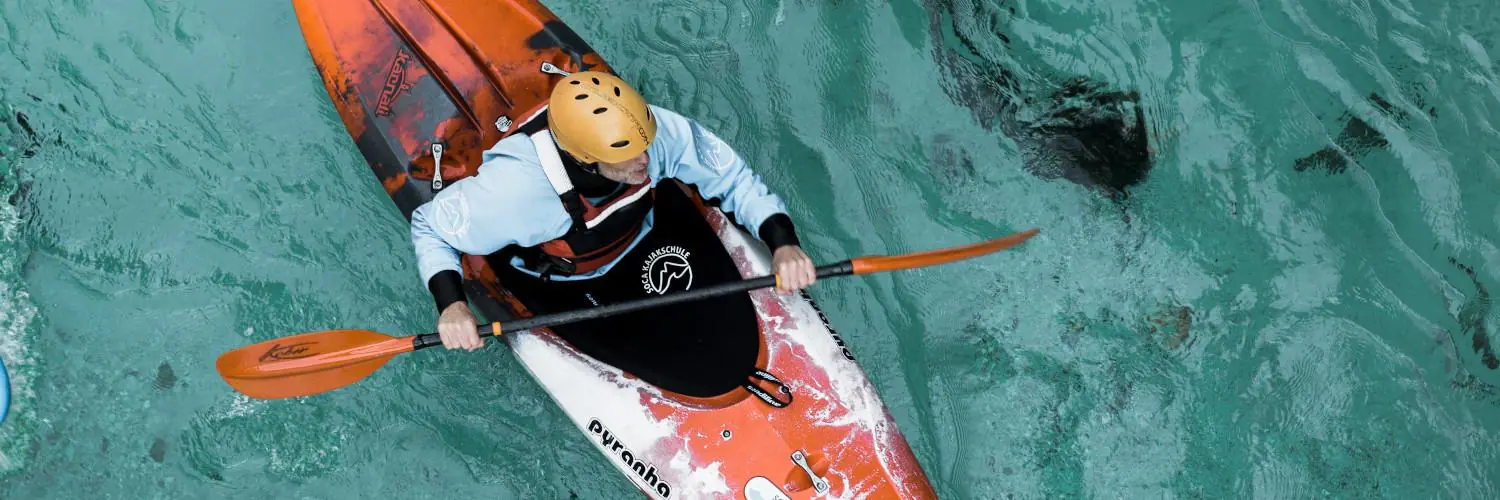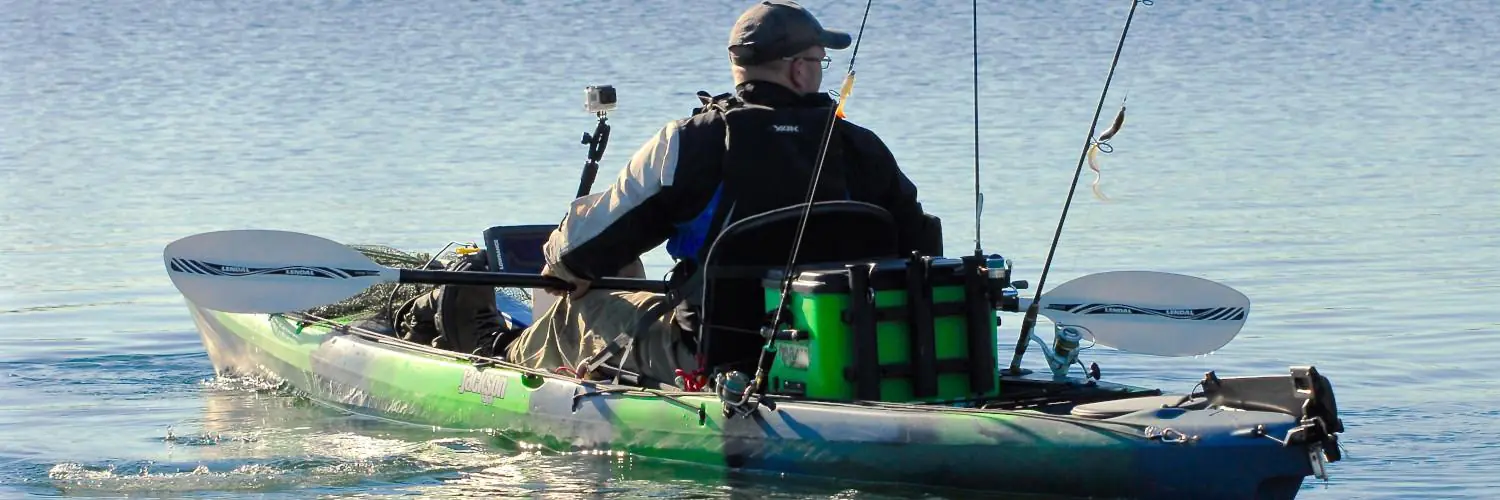Kayak camping in the Grand Canyon offers a unique way to explore one of America’s natural wonders. This adventure combines thrilling rapids, stunning scenery, and peaceful nights under the stars. Kayakers can paddle through clear, green waters below Hoover Dam or tackle more challenging sections of the Colorado River.
The Grand Canyon’s diverse landscape provides many options for kayak campers. Some trips focus on smooth water stretches, perfect for families and beginners. Others venture into the heart of the canyon, facing bigger rapids and more remote campsites. Trips can last from a few days to two weeks, depending on the route and pace.
Camping along the river’s edge is a key part of the experience. Kayakers set up tents on sandy beaches or at the base of towering cliffs. These campsites offer a chance to relax, cook meals, and take in the canyon’s beauty away from crowds. Many people find these peaceful moments just as memorable as the time spent paddling.
Table of Contents
Planning Your Grand Canyon Kayak Camping Trip
Planning a kayak camping trip in the Grand Canyon requires careful preparation. Getting permits and choosing the right time to visit are key steps.
Obtaining Necessary Permits
The National Park Service limits the number of people on the Colorado River. This keeps the canyon peaceful and protects the environment. Permits are given out through a lottery system.
Apply for a permit 1-2 years before your trip. The main lottery happens in February for the next year. There’s also a follow-up lottery each month for canceled trips.
You’ll need to list your preferred launch dates and trip length. Trips can last from 12 to 25 days. Shorter trips are harder to get.
If you win a permit, you become the trip leader. You’re in charge of safety and following park rules.
Determining the Best Time to Visit
The Grand Canyon has different conditions throughout the year. Spring and fall offer mild temperatures and are popular times to visit.
Summer is very hot, with daytime highs over 100°F. But it has the most daylight for exploring. Winter is cold, with a risk of ice on the river.
Water levels change too. Spring has higher flows from snowmelt. This makes rapids bigger and trips faster.
Consider your kayaking skills and comfort with different weather. Check average temperatures and daylight hours for your planned dates.
Crowds are smallest in winter. But some side canyons might be too cold for hiking then.
Essential Gear and Safety
Proper equipment and responsible practices are vital for a safe Grand Canyon kayaking trip. Choosing the right gear and following Leave No Trace principles helps protect both kayakers and the environment.
Life Jacket and Paddle Selection
A well-fitted life jacket is crucial for safety on the Colorado River. Choose a Coast Guard-approved Type III or V life jacket designed for whitewater kayaking. Make sure it fits snugly and allows full range of motion.
For paddles, select a lightweight option made from durable materials like fiberglass or carbon fiber. A paddle length between 194-204 cm works well for most kayakers. Bring a spare paddle in case of damage or loss.
Other essential gear includes:
- Helmet
- Dry bags for gear
- First aid kit
- Sunscreen and hat
- Water filtration system
- Emergency whistle
Pack extra clothes, food, and water in case of unexpected delays on the river.
Leave No Trace Principles
Following Leave No Trace guidelines helps preserve the Grand Canyon’s natural beauty. Pack out all trash, including food scraps. Use established campsites and fire rings when available.
Minimize impact by:
- Staying on marked trails
- Not disturbing wildlife or plants
- Using biodegradable soap for washing
- Disposing of human waste properly
Learn about specific regulations for camping along the Colorado River. Some areas require portable toilets and fire pans.
Respect other visitors by keeping noise levels down and yielding to larger boats. By practicing Leave No Trace, kayakers help protect the Grand Canyon for future generations.
Navigating the Rapids
Kayaking the Colorado River through the Grand Canyon involves tackling many thrilling rapids. Proper skills and safety precautions are essential. Some rapids are famous landmarks that add excitement to the journey.
Classifying Rapids and River Safety
Rapids in the Grand Canyon are rated on a scale of 1 to 10. Class 1-3 rapids are mild, while 8-10 are very difficult. Kayakers should know their skill level and avoid rapids beyond their abilities.
Safety gear is a must. This includes helmets, life jackets, and throw ropes. Kayakers should scout bigger rapids from shore before running them. It’s smart to follow the lead of experienced guides when possible.
Watching for hazards like rocks and holes is key. Reading the river current helps pick the best line through rapids. Teamwork and communication between kayakers increases safety for everyone.
Must-See Rapids Along the Trip
House Rock Rapid is an early test, located at mile 17. Its big waves and technical moves make it exciting.
Hance Rapid at mile 77 is known for its difficulty. Large boulders create a maze-like path through powerful currents.
Lava Falls, at mile 179, is the biggest rapid in the canyon. Its huge waves and drops make it a highlight of any trip.
Hermit Rapid offers a roller coaster ride of big wave trains. Crystal Rapid features a tricky rock island to navigate around.
Lee’s Ferry marks the start of most Grand Canyon trips. While not a rapid itself, it’s where kayakers begin their adventure through this amazing landscape.
Campsite Selection and Setup
Picking good campsites and setting up camp properly are key skills for Grand Canyon kayak camping. The right spot and setup can make your trip safer and more enjoyable.
Choosing the Best Campsites
Look for flat, sandy areas above the high-water mark. Sandy beaches make ideal spots to pull up kayaks and pitch tents. Stay at least 50 yards from water sources to protect wildlife habitats.
Avoid camping under unstable cliffs or in narrow side canyons. These areas can be dangerous during flash floods. Check for natural shelters like rock overhangs that offer protection from sun and rain.
Try to find spots with morning sunlight to help dry gear. Look for natural windbreaks like large boulders. Good campsites often have nice views of the canyon and river.
Setting Up a Comfortable Camp
Set up tents on the highest ground available. Use rocks or sand to secure tent stakes. Create a separate cooking area away from sleeping spots.
Unpack and inflate sleeping pads right away. They make sleeping on sand much more comfortable. Arrange gear neatly and keep paths clear to avoid tripping hazards.
Set up a group tarp for shade and rain protection. Use kayaks or large rocks to create windbreaks around the campfire area. Keep food stored securely to prevent wildlife encounters.
Exploring Beyond the River
Kayak camping in the Grand Canyon offers more than just river adventures. The surrounding landscape holds hidden treasures and ancient stories waiting to be discovered.
Hiking to Scenic Views and Landmarks
Side hikes from the river open up stunning vistas and natural wonders. Phantom Ranch, a historic oasis at the bottom of the canyon, provides a welcome rest stop. Hikers can explore the Nankoweap Granaries, ancient food storage sites built into cliff walls.
Deer Creek Falls, a 180-foot waterfall, offers a refreshing break from the desert heat. The turquoise waters of Havasu Creek create a striking contrast against red rock walls.
Spring brings colorful wildflowers to the canyon slopes. Redwall Cavern, a massive limestone amphitheater, makes an ideal spot for lunch and exploration.
The Rich History of the Canyon’s Inhabitants
The Grand Canyon tells a story of human habitation spanning thousands of years. Ancient Puebloan peoples left behind pottery shards, rock art, and cliff dwellings.
Later, Paiute and Havasupai tribes made their homes in the canyon. Their descendants still live in the area today.
European explorers and early American settlers faced extreme challenges navigating the canyon. Their legacy lives on in place names and historic sites along the river.
Park rangers and guides can share fascinating tales of the canyon’s past. Learning about this rich history adds depth to the kayaking experience.
Concluding Your Journey
As your Grand Canyon kayak camping adventure nears its end, you’ll face important decisions about your exit point and reflect on the incredible experience. Proper planning for your takeout location and taking time to process the journey are key parts of wrapping up your trip.
Exiting at Diamond Creek or Lake Mead
Diamond Creek offers an earlier exit point at river mile 225. This dirt road access is manageable for most vehicles. Lake Mead provides a later takeout option, extending your trip by about 60 miles. The lake’s fluctuating water levels can impact beach camping availability.
Glen Canyon National Recreation Area manages Lake Mead. Boaters must follow park regulations when exiting there. Lake Mead Marina offers boat ramps and storage facilities for kayaks and gear.
Advance arrangements are needed for vehicle shuttles to your chosen takeout. Commercial shuttle services are available to transport you and your equipment back to your starting point.
Reflecting on the Experience
Take time to appreciate the journey you’ve completed. Many kayakers find the Grand Canyon profoundly impacts them. The canyon’s massive scale and natural beauty leave lasting impressions.
Consider keeping a trip journal to record your memories. Photos and videos help preserve special moments. Share stories with your group to relive exciting rapids and peaceful campsites.
Reflect on the skills you’ve gained. Whitewater kayaking, wilderness camping, and teamwork are valuable takeaways. Think about how you’ve grown personally during your time in the canyon.
Grand Canyon rafting and kayaking often inspire return trips. Many paddlers plan future adventures to explore new areas of the canyon or revisit favorite spots.

